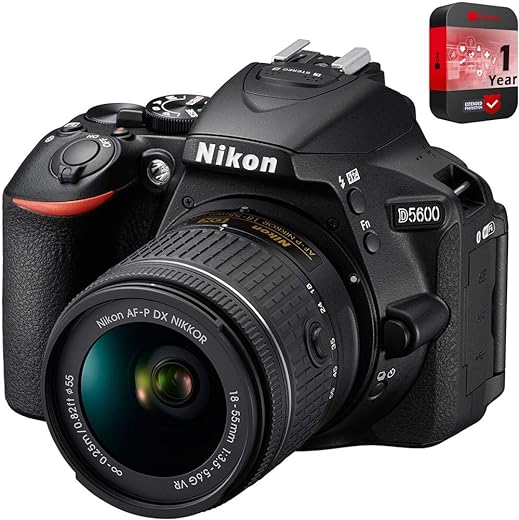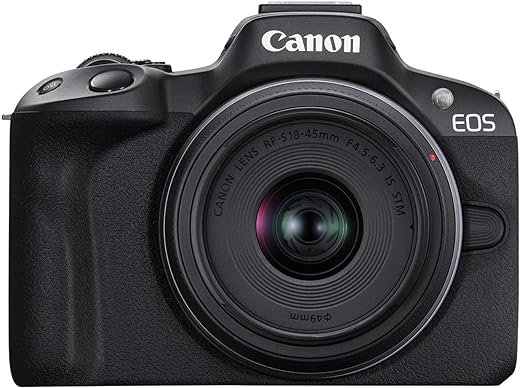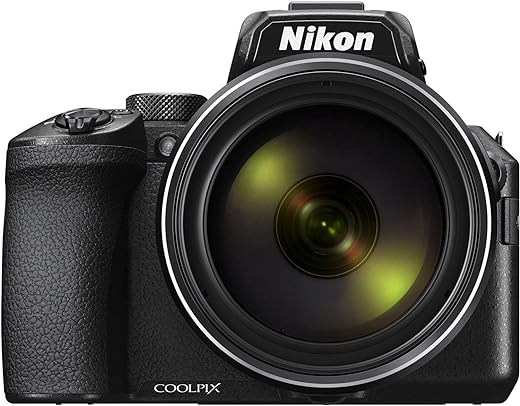When comparing the Nikon D5600 Digital SLR Camera and the Nikon D7500 DSLR, it’s important to consider their features, performance, and value for photographers of different levels. Let’s delve into the specifics to help you decide which camera best suits your needs and preferences.
Capturing Moments
The Nikon D5600 Digital SLR Camera with 18-55mm VR DX AF-P Lens offers high-quality 24.2MP images and Full HD 1080p video recording at 60 fps. Its versatile 3.2″ touchscreen and SnapBridge Bluetooth and Wi-Fi make sharing and capturing moments easy and efficient.
Photography Enthusiasts
The Nikon D7500 DX-Format Digital SLR Body offers exceptional image quality, high-performance autofocus, and advanced video capabilities. With a tilting LCD screen, 4K Ultra HD video, and built-in Wi-Fi and Bluetooth connectivity, this camera is a versatile and powerful tool for photography enthusiasts.
Nikon D5600 Digital SLR Camera
24.2MP DX-Format CMOS Sensor & EXPEED 4 Image Processor
Yes
Full HD 1080p Video Recording at 60 fps
Yes
3.2″ 1.037m-Dot Vari-Angle Touchscreen
Yes
SnapBridge Bluetooth and Wi-Fi with NFC
Yes
Continuous Shooting Capability
No
Nikon D7500 DSLR
24.2MP DX-Format CMOS Sensor & EXPEED 4 Image Processor
No
Full HD 1080p Video Recording at 60 fps
4K Ultra HD and 1080p Full HD video
3.2″ 1.037m-Dot Vari-Angle Touchscreen
Large 3.2” 922k Dot, Tilting LCD Screen with Touch Functionality
SnapBridge Bluetooth and Wi-Fi with NFC
Built-in Wi-Fi and Bluetooth
Continuous Shooting Capability
Up to 8 fps continuous shooting capability
Nikon D5600 Digital SLR Camera
Nikon D7500 DSLR
Nikon D5600 Digital SLR Camera
Nikon D7500 DSLR
Comparison table


Nikon D5600 Digital SLR Camera & 18-55mm VR DX AF-P Lens
- USPs:
- Excellent image quality with a 24.2 MP sensor.
- Lightweight and compact design, ideal for travel.
- User-friendly interface suitable for beginners.
- Pros:
- Good battery life for extended shooting sessions.
- Articulating touchscreen for flexible shooting angles.
- Cons:
- Limited ISO range compared to some competitors.
- No 4K video recording capability.
- Use-Cases:
- Perfect for photography enthusiasts looking for a versatile camera for everyday use.
Nikon D7500 DX-Format Digital SLR Body
- USPs:
- Impressive 51-point autofocus system for fast and accurate focusing.
- High ISO range for low-light performance (100-51200).
- 4K UHD video recording capability for professional videography.
- Pros:
- Robust build quality suitable for challenging environments.
- High-speed continuous shooting at 8 fps.
- Cons:
- Fixed LCD screen may limit shooting flexibility.
- Slightly heavier than entry-level DSLRs.
- Use-Cases:
- Ideal for photographers and videographers demanding advanced features and performance.
Based on the comparison, the Nikon D7500 DX-Format Digital SLR Body emerges as the clear winner, offering superior autofocus capabilities, higher ISO range, 4K video recording, and faster continuous shooting. However, for beginners or those prioritizing portability and ease of use, the Nikon D5600 Digital SLR Camera & 18-55mm VR DX AF-P Lens remains a strong choice.
In summary, if you require advanced features and exceptional performance, the Nikon D7500 is the recommended choice. On the other hand, if you prioritize a user-friendly experience and compact design for everyday photography, the Nikon D5600 is a reliable option.
Nikon D5600 vs D7500: Choosing the Right Digital DSLR for You
Comparing Nikon D5600 vs Nikon D7500 Digital SLR Cameras
When deciding between the Nikon D5600 and Nikon D7500 Digital SLR Cameras, it’s important to consider several key factors that can influence your choice. Below are some general guidelines and factors to help you make an informed decision:
Sensor and Image Quality
- Nikon D5600: 24.2MP APS-C CMOS sensor
- Nikon D7500: 20.9MP APS-C CMOS sensor
- Consider your preference for resolution and low-light performance.
Autofocus System
- Nikon D5600: 39-point autofocus system
- Nikon D7500: 51-point autofocus system with 15 cross-type sensors
- Think about your need for fast and accurate focusing, especially for moving subjects.
Performance and Speed
- Nikon D5600: 5 fps continuous shooting
- Nikon D7500: 8 fps continuous shooting
- Evaluate your requirements for capturing fast action or sports photography.
Connectivity and Features
- Nikon D5600: SnapBridge for seamless image transfer
- Nikon D7500: Built-in Wi-Fi and Bluetooth for easier connectivity
- Consider the importance of wireless capabilities for your workflow.
Price and Budget
- Nikon D5600: Generally more budget-friendly
- Nikon D7500: Higher price point due to advanced features
- Align your choice with your budget constraints and feature priorities.
Lens Compatibility
- Both cameras are compatible with the full range of Nikon F-mount lenses.
- Consider any existing lenses you may own or plan to invest in for your photography needs.
Video Capabilities
- Nikon D5600: Full HD 1080p video recording
- Nikon D7500: 4K UHD video recording
- Assess your video recording requirements and preferences.
Keep these factors in mind while comparing the Nikon D5600 and Nikon D7500 Digital SLR Cameras to find the model that best suits your photography needs and preferences.
Nikon D5600 vs D7500: Choosing the Right Nikon DSLR
When comparing the Nikon D5600 and D7500, the price difference is indeed justified by their features. The D7500 is a higher-end model offering superior specifications such as a more advanced autofocus system, better low-light performance, faster continuous shooting speed, and a more rugged build quality. These enhanced features come at a higher cost compared to the D5600, making the price difference justified for those seeking a more professional-grade camera.
Certainly! The key differences between the Nikon D5600 and Nikon D7500 lie in their target audience and features. The Nikon D5600 is geared towards entry-level photographers with its user-friendly interface and lighter weight, making it a great choice for beginners. On the other hand, the Nikon D7500 is aimed at more advanced users with its higher-end features, such as better weather sealing, dual card slots, and a faster continuous shooting speed. The D7500 also has a higher resolution sensor, better low-light performance, and more autofocus points compared to the D5600. Overall, the Nikon D7500 is a more advanced camera suited for photographers looking for additional features and improved performance.
Certainly! The Nikon D5600 and Nikon D7500 are both excellent cameras, but they do have some key differences in features.
One major difference is the sensor size. The D5600 has an APS-C sensor, while the D7500 has a slightly larger APS-C sensor. This means the D7500 may offer slightly better image quality, especially in low light situations.
Another difference is in the autofocus system. The D7500 has a more advanced autofocus system with more focus points and better tracking capabilities, making it more suitable for fast-moving subjects like sports or wildlife photography.
Additionally, the D7500 has a more robust build quality and weather sealing compared to the D5600, making it more durable and suitable for challenging shooting conditions.
These are just a few key differences between the Nikon D5600 and Nikon D7500. Depending on your specific needs and preferences, one may be more suitable for you than the other.
When comparing the Nikon D5600 and D7500 for beginners, both cameras offer excellent features; however, the D5600 is often considered better suited for beginners due to its user-friendly interface and lighter weight. The D5600 is a great entry-level camera with a good balance of features and ease of use, making it ideal for those new to photography. On the other hand, the D7500 is more advanced and may have features that beginners might not fully utilize or understand right away. So, for beginners looking for a solid camera to start with, the D5600 would be a great choice!
When comparing the image quality and low-light performance between the Nikon D5600 and D7500, there are some notable differences to consider. The D7500 generally offers superior image quality and low-light performance compared to the D5600. This is mainly due to the D7500 having a higher resolution sensor, better low-light capabilities, and more advanced features that contribute to producing better images in varying lighting conditions. Overall, the D7500 is considered to be a step up in terms of image quality and low-light performance compared to the D5600.











6 thoughts on “Nikon D5600 vs Nikon D7500”
Great comparison! I appreciate the detailed breakdown of the key differences between the two models.
The section on low light performance was very informative. It helped me understand which camera would be better for my night photography.
Overall, a well-written article that provided valuable insights. It has definitely helped me narrow down my choice between the D5600 and D7500.
I would have liked to see a comparison of the battery life between the two cameras. That’s an important factor for me when choosing a camera.
I wish there was more focus on the video capabilities of each camera. That would have been helpful for my decision-making process.
I own the D5600 and after reading this article, I’m considering upgrading to the D7500. The weather-sealing feature is a big selling point for me.
Comments are closed.